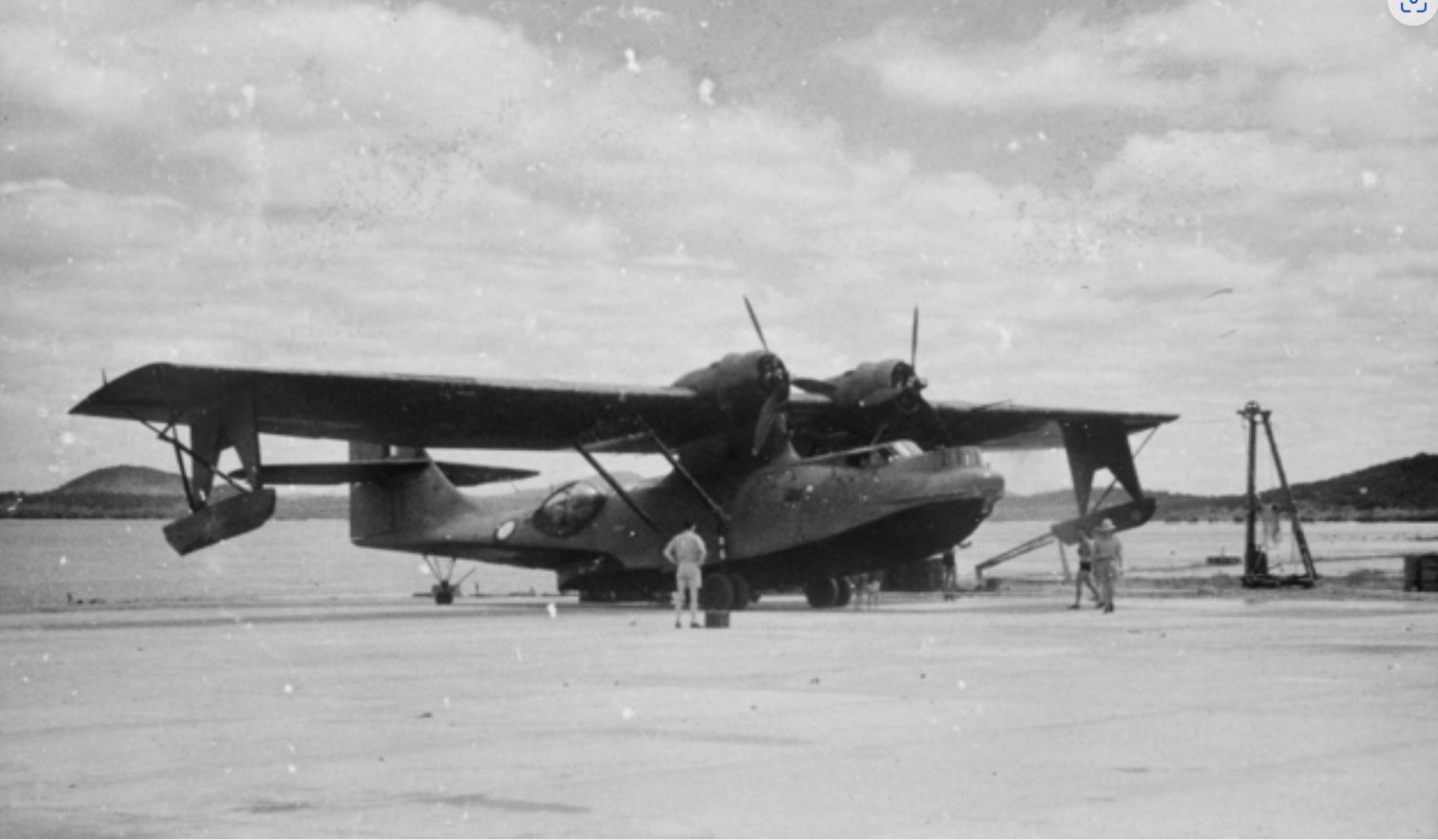No. 20 Squadron RAAF
From Our Contribution
 1943 Bowen, Qld. Catalina Flying Boat beached for maintenance. | |
Brief History
The squadron was raised in August 1941 as a maritime patrol unit operating Consolidated PBY Catalina and Short Empire flying boats on long range patrols from bases in New Guinea, Queensland and the Northern Territory, conducting search-and-rescue, mine-laying, anti-submarine and bombing missions against Japanese targets in the Pacific theatre.
By the outbreak of war in the Pacific, No. 20 Squadron had a strength of six Catalinas and two Empire flying boats. The squadron undertook its first sortie of the Pacific War on 8 Dec 1941; a Catalina located three Japanese luggers in the vicinity of Thursday Island, Queensland. Later in December it commenced anti-submarine patrols and, in January 1942, bombing raids against Japanese bases. On 21 Jan 1942, one of its Catalinas located the Japanese fleet steaming for Rabaul and signalled a warning to the town's Australian defenders before being shot down by anti-aircraft fire; it was the squadron's first combat loss.
In the wake of the fall of Rabaul, the Catalinas of Nos. 11 and 20 Squadrons became the RAAF's only offensive weapon against the Japanese. Their raids on Rabaul did little to stem the Japanese advance, and in the following months Port Moresby itself was subjected to increasingly frequent attacks, which destroyed aircraft, facilities, and squadron records. In February 1942, the Short Empires operated by Nos. 11 and 20 Squadrons were transferred to the newly formed No. 33 (Transport) Squadron. No. 20 Squadron lost two Catalinas during patrols on 4 and 6 May; the nine crewmen of the first were later found to have been captured and beheaded; the crew of the second were also captured and subsequently disappeared without trace
In response to the threat of invasion at Port Moresby, Nos. 11 and 20 Squadrons moved to Bowen, Queensland, on 7 May 1942. They were soon attacking Japanese targets in Lae, Salamaua and Rabaul. Its prime responsibility in early 1942 was maritime reconnaissance as far as New Guinea, the Solomon Islands, and New Caledonia; the latter half of the year saw a greater focus on night bombing. The squadron relocated to Cairns on 11 Nov 1942 from where it continued to conduct reconnaissance, anti-submarine and the occasional bombing operation over the waters around New Guinea. The squadron's role changed in June 1943 when it commenced mine-laying operations over the Netherlands East Indies and the Philippines, though it continued to make some bombing raids and supply drops.
In September 1944, No. 20 Squadron moved to Darwin, Northern Territory. On the night of 30 Sep 1944, a Catalina of No. 20 Squadron was shot down while attacking a ship at Pomelaa in the Dutch East Indies. Another of the squadron's Catalinas went down on the night of 27/28 January 1945, possibly in a cyclone over the Timor Sea,while participating in the campaign to mine Surabaya. In March, a detachment of four No. 20 Squadron aircraft, along with four from No. 43 Squadron, laid mines off the coast of southern China and Taiwan as part of an offensive conducted from Leyte Gulf in the Philippines. One of No. 20 Squadron's Catalinas was lost on the night of 7/8 March, most likely owing to bad weather rather than enemy action. Three of the squadron's aircraft mined the entrance to Hong Kong harbour on 8 April and, on 26 May, four of its Catalinas mined Wenzhou harbour in China, the furthest north that any Australian aircraft infiltrated during the war in the Pacific. Three of its aircraft flew the RAAF's last mine-laying mission on 30 July 1945. No. 20 Squadron's final wartime sortie was a patrol on 14 August 1945.
Following the end of the war, the squadron operated in a transport role and ferried Australian POWs home from various locations in South East Asia. It relocated to RAAF Station Rathmines, New South Wales, on 21 Nov 1945 and flew its last mission, a transport flight to Balikpapan, on 21 Jan 1946. It was disbanded at Rathmines on 27 Mar 1946
Individual Honours
- 1 x Order of the British Emopire
- 2 x Distinguished Service Order
- 11 x Distinguished Flying Cross
- 1 x Air Force Cross
- 10 x Distinguished Flying Medal
- 8 x Mentioned in Despatches
Air crew
- Stanley Neil Butcher 2 Feb - 25 Oct 1945
Notes